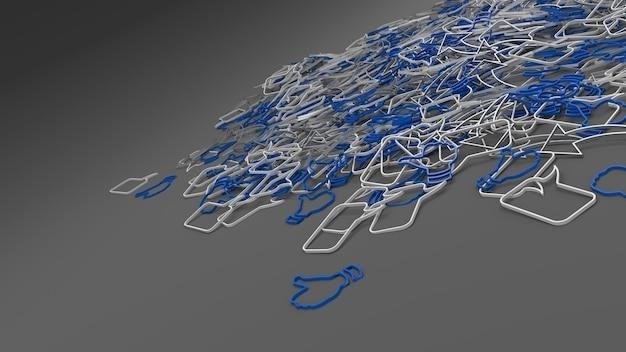
Principles of Data Fabric
The principles of data fabric are a set of guidelines that help organizations design and implement a data fabric architecture that can effectively manage and govern data across diverse sources, including cloud environments, on-premises systems, and edge devices. These principles focus on achieving seamless data integration, secure data sharing, and centralized data governance, ensuring that data is accessible and usable for various purposes.
Introduction to Data Fabric
Data fabric is a revolutionary approach to data management that addresses the challenges of managing data scattered across various sources, including cloud environments, on-premises systems, and edge devices. It’s an architectural paradigm that aims to unify data access, governance, and security, regardless of where the data resides. Imagine a data fabric as a cohesive network that seamlessly connects data from different sources, enabling organizations to access and utilize it effectively for diverse purposes.
This distributed data architecture leverages advanced technologies, including metadata management, data virtualization, and artificial intelligence (AI), to create a unified view of data, regardless of its location or format. It empowers organizations to manage data as a single entity, allowing for simplified data governance, enhanced data security, and improved data accessibility for various business processes and analytical needs.
The concept of data fabric is gaining significant traction in the modern data landscape, as organizations strive to harness the power of their data effectively. It empowers data-driven decision-making by providing a unified and accessible view of data, facilitating insights from diverse sources, and streamlining the process of leveraging data across the enterprise.
The Importance of Data Fabric
In today’s data-driven world, organizations are grappling with the complexities of managing data scattered across multiple sources, often resulting in data silos and challenges in accessing and utilizing data effectively. Data fabric emerges as a crucial solution to address these challenges by providing a unified and accessible approach to data management.
The importance of data fabric lies in its ability to transform how organizations manage and leverage their data. By connecting disparate data sources, it eliminates data silos, enabling seamless data sharing and collaboration across departments and teams. This fosters a more agile and efficient data ecosystem, empowering organizations to make data-driven decisions with greater confidence.
Furthermore, data fabric plays a pivotal role in enhancing data governance and security. By providing a centralized view of data, it simplifies the process of enforcing data policies, ensuring compliance with regulations, and safeguarding sensitive information. This empowers organizations to maintain data integrity, protect their data assets, and mitigate potential risks associated with data breaches.
Key Features of Data Fabric
Data fabric is a transformative approach to data management, characterized by a set of key features that enable organizations to overcome the challenges of data silos and access data more effectively. These features work in tandem to create a unified, agile, and secure data ecosystem.
One of the core features is data virtualization, which enables data access without physically moving or copying data. This eliminates the need for complex data integration processes and reduces latency, allowing users to access data from various sources seamlessly. Another key feature is data federation, which allows organizations to access and manage data across different platforms and locations, including on-premises, cloud, and edge environments.
Data fabric also emphasizes data governance, ensuring that data is managed and accessed in a controlled and secure manner. This includes features like data quality management, data lineage tracking, and access control mechanisms. Finally, data cataloging plays a vital role in providing a comprehensive inventory of data assets, making it easier for users to discover and understand the data available to them. This promotes data reusability and improves data literacy within the organization.
Data Fabric Architecture
The architecture of a data fabric is a complex and layered structure that enables seamless data access, management, and governance across diverse environments. It typically comprises multiple layers, each playing a distinct role in orchestrating the flow of data and ensuring its integrity and security.

At the foundation lies the data source layer, encompassing a wide range of data sources, including databases, data lakes, data warehouses, and cloud services. This layer houses the raw data that forms the basis of the data fabric. Above this layer sits the data integration layer, responsible for connecting and harmonizing data from various sources. This layer employs data virtualization, federation, and other techniques to provide a unified view of the data.
The data governance layer sits atop the integration layer, enforcing data policies, security measures, and quality standards. This layer ensures that data is accessed and used in a controlled and responsible manner. Finally, the data consumption layer provides tools and interfaces for users to access, analyze, and visualize data, enabling them to derive insights and make informed decisions. This layer leverages data visualization tools, dashboards, and analytical platforms to facilitate data-driven decision-making.
Data Fabric Design Principles
Designing a successful data fabric necessitates adhering to a set of core principles that guide the architecture, implementation, and ongoing management of the data fabric. These principles ensure that the data fabric effectively addresses the challenges of data management in modern, complex environments.
One key principle is data governance, which emphasizes the establishment of clear policies and procedures for controlling data access, usage, and security. Another crucial principle is data security, requiring robust measures to protect sensitive data from unauthorized access and breaches. Data quality is paramount, ensuring the accuracy, consistency, and completeness of data, essential for reliable decision-making.
Furthermore, data agility is critical, allowing for rapid and flexible adaptation to changing data needs and business requirements. Finally, data transparency promotes open communication and understanding about how data is collected, used, and managed, fostering trust and collaboration among stakeholders.
Implementation Strategies for Data Fabric
Implementing a data fabric involves a strategic approach that takes into account the specific needs and requirements of the organization. Various implementation strategies can be employed, each with its own advantages and considerations.
One common approach is a phased implementation, where the data fabric is rolled out in stages, starting with a pilot project that demonstrates its value. This allows for gradual adoption and minimizes disruption to existing systems. Another strategy is to leverage existing data management tools and technologies as building blocks for the data fabric, reducing the need for entirely new infrastructure.
A cloud-native approach can also be adopted, utilizing cloud-based services and platforms for data storage, processing, and governance. Finally, organizations can opt for a hybrid approach, combining on-premises and cloud resources to create a flexible and scalable data fabric architecture.
Benefits of Data Fabric
Implementing a data fabric architecture offers numerous benefits that can significantly enhance data management capabilities and drive business value. One of the key advantages is improved data accessibility, allowing users to access relevant data from various sources without having to navigate complex systems or request data from different departments. This fosters data-driven decision making, enabling organizations to gain insights and respond to market changes more effectively.
Another significant benefit is enhanced data governance. Data fabric solutions provide a centralized control point for managing data security, compliance, and access policies, ensuring that sensitive information is protected and used responsibly. This helps organizations comply with regulatory requirements and build trust with customers and partners.
Furthermore, data fabric promotes data agility by allowing organizations to quickly adapt to changing business needs. The ability to easily integrate new data sources, deploy new data applications, and scale resources as needed provides the flexibility required for a dynamic business environment.
Data Fabric Use Cases
Data fabric solutions find applications across a wide range of industries and business functions, demonstrating their versatility and ability to address diverse data management challenges. In the financial services sector, data fabric can be used to improve fraud detection and risk management by providing a unified view of customer data from multiple sources, enabling analysts to identify suspicious patterns and prevent fraudulent activities.
In healthcare, data fabric enables personalized medicine by facilitating the integration of patient data from electronic health records, medical imaging, and wearable devices, providing a comprehensive understanding of individual health profiles. This information can be used to tailor treatment plans and improve patient outcomes.
In manufacturing, data fabric can optimize supply chains by connecting data from production lines, inventory systems, and logistics platforms, providing real-time visibility into the entire supply chain. This allows for improved forecasting, reduced lead times, and efficient resource allocation.
Data Fabric Best Practices
Implementing a successful data fabric requires adhering to certain best practices that ensure its effectiveness and optimize its benefits. Start by defining clear data governance policies and standards that establish rules for data access, security, and quality. This lays the foundation for a consistent and reliable data environment.
Prioritize metadata management by establishing a comprehensive metadata repository that captures key information about data sources, data quality, and data lineage. This metadata layer is essential for understanding data relationships and ensuring data consistency.
Employ a phased approach to data fabric implementation, starting with a pilot project that demonstrates the value proposition of data fabric and identifies potential challenges. This iterative approach allows for adjustments and refinements based on real-world experience.
Finally, invest in tools and technologies that support data fabric principles, such as data virtualization, data cataloging, and data governance platforms. These tools facilitate data integration, discovery, and control, enhancing the overall efficiency and effectiveness of the data fabric architecture.
The Future of Data Fabric
The future of data fabric is bright, driven by the increasing complexity of data environments and the growing need for data-driven insights. As organizations continue to embrace cloud computing, edge computing, and the Internet of Things, the demand for a scalable and flexible data architecture like data fabric will only increase.
Advancements in artificial intelligence (AI) and machine learning (ML) will further enhance data fabric capabilities, enabling automated data discovery, data quality monitoring, and data governance. AI-powered insights will provide valuable recommendations for data management and optimization, leading to more efficient data utilization.
The integration of data fabric with emerging technologies like blockchain and quantum computing holds immense potential for transforming data security, privacy, and analytics. Blockchain’s immutability and transparency will strengthen data security, while quantum computing will unlock new possibilities for complex data analysis.
Overall, data fabric is poised to play a pivotal role in shaping the future of data management, empowering organizations to harness the full potential of their data assets and drive innovation in a data-driven world;